A Bit of T L C - Part 2 Bridge Over Troubled Water
Kanchanaburi, Thailand November 2023
Standing on the banks of the River Kwai, we noticed a lady of about our age sitting at the hotel restaurant. She eventually wandered over to us and started a conversation. It turned out that her father was a Medical Officer and POW here in Kanchanaburi. She had come with her son to visit the camp where her father had been held. It must have been a very emotional and poignant visit for them and she explained that although he was reluctant to speak about his time here, he had managed to keep a diary which was published as a book – “Gods without Reason” on his return, and I vowed to look it up.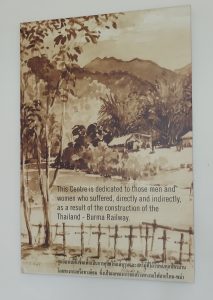
I had been interested in visiting Kanchanaburi since reading (and watching the excellent film) “The Railway Man” based on a true story by Eric Lomax. The author was a British officer who was captured by the Japanese in Singapore during World War II and forced to work on the Thai-Burma Railway. We boarded the train at Thonburi station the following day, along with others making a pilgrimage to the site of one of the worst atrocities of the second world war.
Our hotel was steps away from the “bridge on the River Kwai” made infamous by the film of the same name (based on the book by Pierre Boulle) starring Alec Guiness. Unlike “The Railway Man”, the book and film’s plot and characters were entirely fictional, although loosely based on the construction of a railway by prisoners of war, conscripted Indians and native Asian workers, forced by the occupying Japanese army to labour using only basic tools in barbaric conditions.
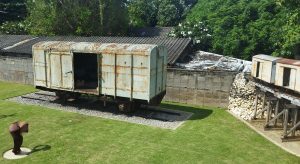
In fact, the river that the bridges (there were more than one!) spanned was actually called the Mae Klong but the Thais decided to re-name it the Kwai in the sixties! The “death” railway still exists and continues on, across the bridge to Nam Sok (our next destination) although only the arches remain of the original bridge, which was bombed by the allies at the end of the war.
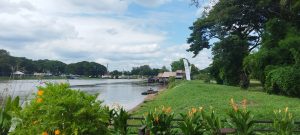
Belying its dark history, the area along the riverfront was quite serene with hotels and restaurants lining the shore and longtail boats cruising up and down the river.
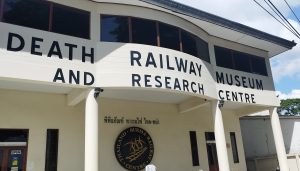 Visiting the Death Railway Museum however, was a sombre but absorbing experience. It featured a comprehensive collection of photos, eye witness accounts, records and diaries (many of these later discovered hidden from the Japanese in graves and bamboo poles), along with artifacts found at the sites of the concentration camps which lined the river. The awful death toll was brought home when visiting the impressively manicured war cemetery next door which contained the remains of almost 7000 Commonwealth and Dutch soldiers who sadly lost their lives during the construction of the railway. So sad to think that history keeps repeating itself, men’s cruelty to each other goes on, and we learn nothing. Such a tragic waste of lives…
Visiting the Death Railway Museum however, was a sombre but absorbing experience. It featured a comprehensive collection of photos, eye witness accounts, records and diaries (many of these later discovered hidden from the Japanese in graves and bamboo poles), along with artifacts found at the sites of the concentration camps which lined the river. The awful death toll was brought home when visiting the impressively manicured war cemetery next door which contained the remains of almost 7000 Commonwealth and Dutch soldiers who sadly lost their lives during the construction of the railway. So sad to think that history keeps repeating itself, men’s cruelty to each other goes on, and we learn nothing. Such a tragic waste of lives…
The following morning we set off across the bridge itself, which was open to pedestrians who had to step precariously into small refuges when a train came through. The train did slow down when crossing the bridge but I guess health and safety were the last considerations when it was built! I don’t think Ian would have enjoyed driving trains on this line…
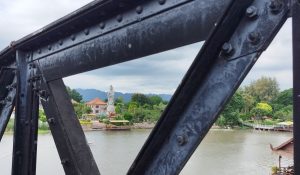
On the other side of the river was a night market, indelicately called “Concentration Camp Market”, which was actually on the site of the old Japanese Officers quarters. It was closed when we visited and the only remains were a couple of rusty old army vehicles and a lookout tower.
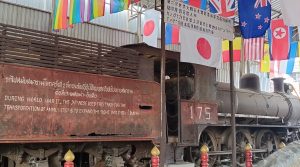
Back across the river we visited the JEATH museum (named after the forces involved in the war in this region – Japan, England, America/Australia, Thailand and Holland) and was set in an old detention hut. It contained reconstructions of the wooden bridge built downriver by the Japanese, old photos and various items and possessions uncovered after the war (including depictions of camp life on mess tins and cigarette boxes), but was poorly signposted and downright confusing in parts (not sure what a collection of the dresses worn by Miss Thailand over the decades had to do with anything!).
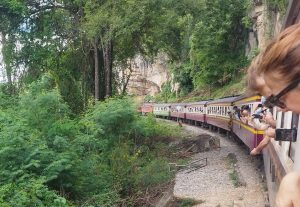
We ventured further along the line to Nam Tok and crossed over the bridge on the train this time. The remains of the original line ended here, but remnants of the railway could still be found in the surrounding national park. We passed by what looked like fields and fields of cannabis, but it actually turned out to be cassava! Our comfy, family run homestay was a few minutes walk away from the station and we received a warm welcome from Pon, the host. Waiting for our room to be ready, we were treated to a hearty lunch for the princely sum of £2 each… we were beginning to like this place!
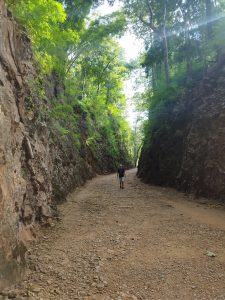
It turned out to be a fluke, but we hailed a Grab cab instantly that afternoon to take us to Hellfire Pass, the most gruelling part of the railway, where the POWs had to cut a stretch of over 500m through the mountain, using only hand drills, picks and shovels to carve the rock so that a train could pass. Many of the men who met their deaths here have been commemorated by a very moving museum built and maintained by the Australian Government. The exhibits included video and written commentary by Australian veterans, which was provided by an audio commentary as we walked along the pass. A fitting and evocative memorial to the struggles of these brave men and an experience I will never forget.
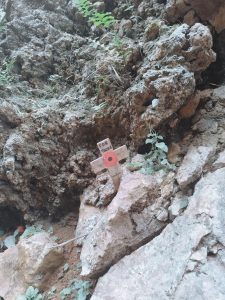
The following morning, we set off by foot along the railway line (which felt quite dangerous, but Ian assured me it wasn’t electrified!) to the Sai Yok Noi waterfall. The old line ended here with one of the many old Japanese engines they left behind, and a path leading up to a nice, but unspectacular waterfall. We struggled to find a taxi to the Sai Yoi National Park that afternoon, and after much haggling had a songthaew (a converted pick up truck) to ourselves. The park promised another section of the railway, waterfalls and a cave full of the rare hog-nosed bats (the world’s smallest mammal). Despite the confusing sign-posting, we eventually found the cave and were rewarded with a few larger bats, but the tiny bats were nowhere to be seen (or maybe just too small!). Ian spotted a group of gibbons, and the waterfall was very beautiful, but otherwise the park was quite disappointing. Our driver obviously agreed, as we had to wake him up to drive us back to our homestay!
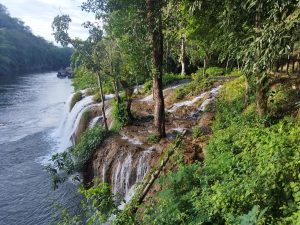
Next stop: “Wats” Going on Here Then…
More photos!…
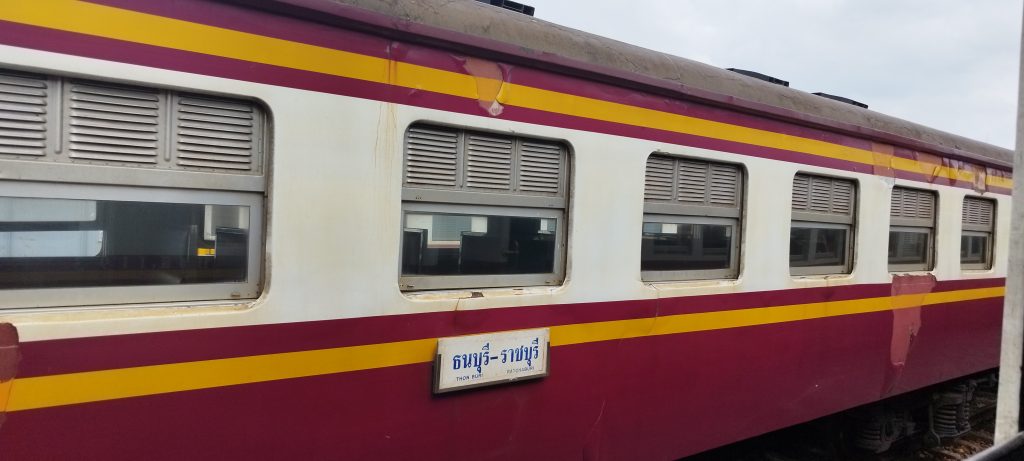

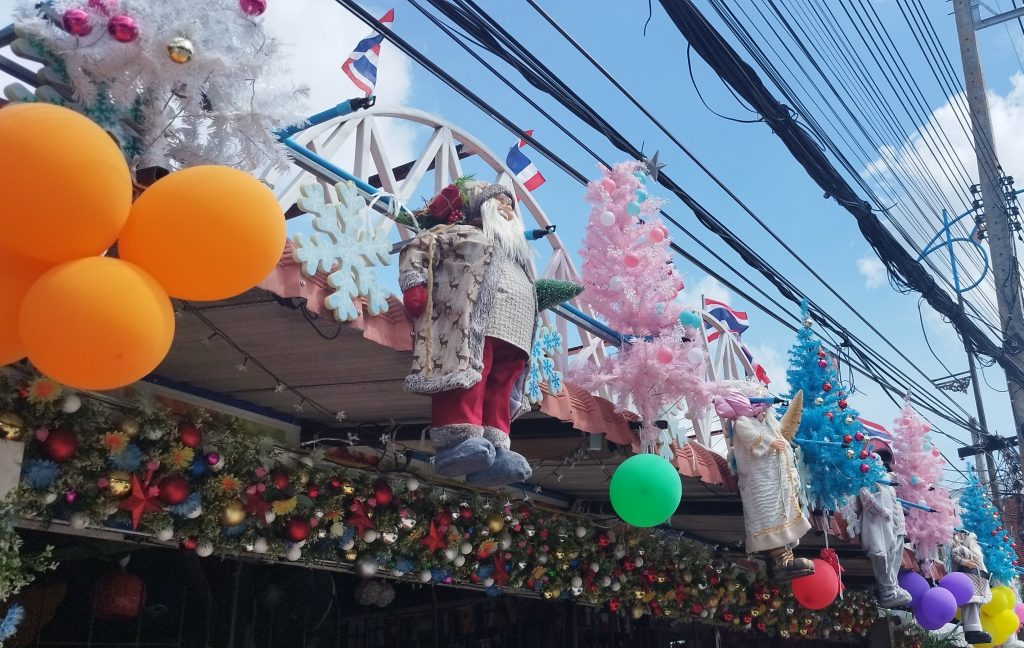
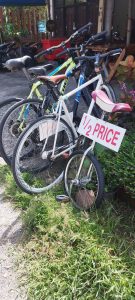
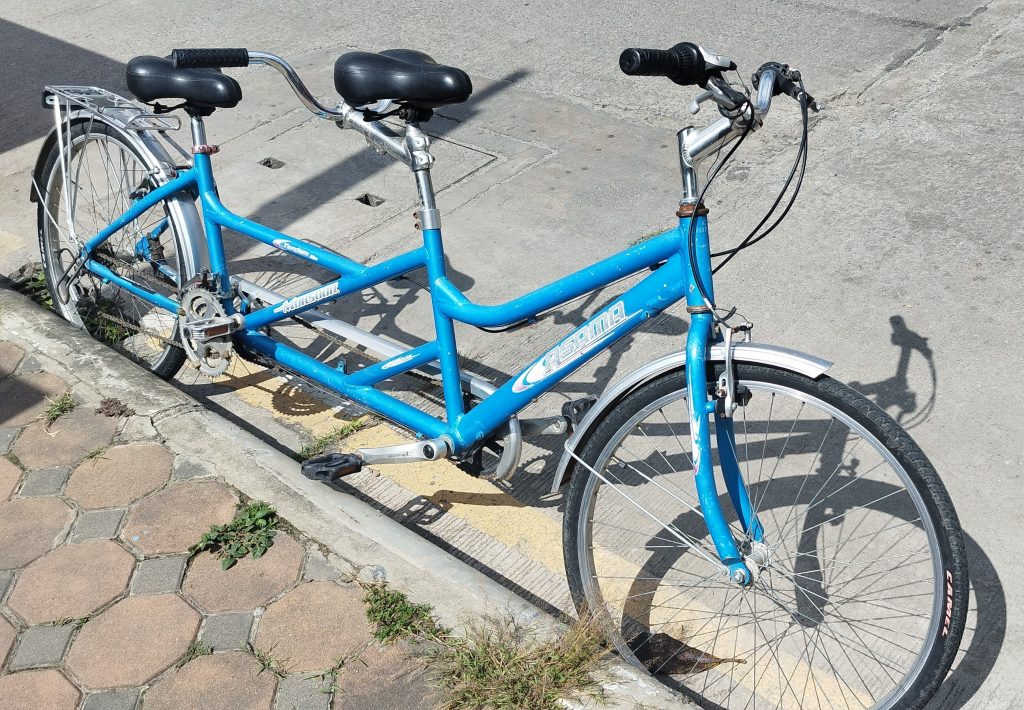
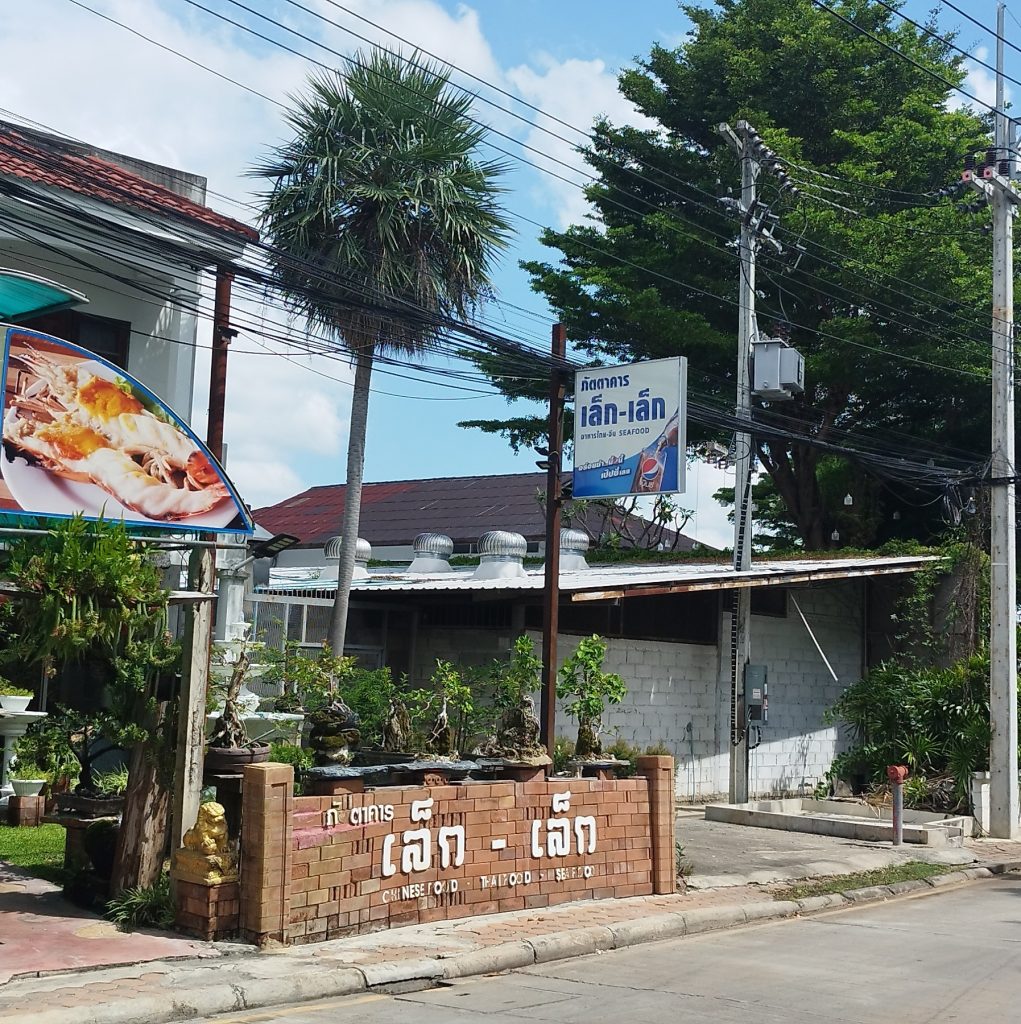
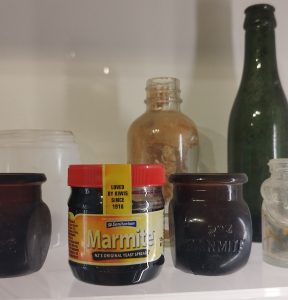
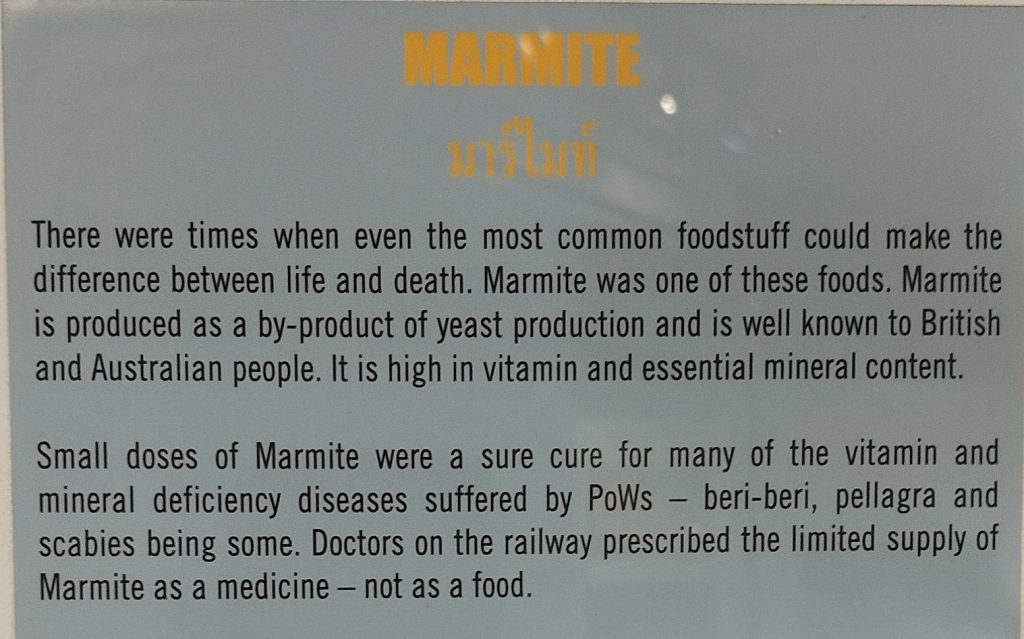
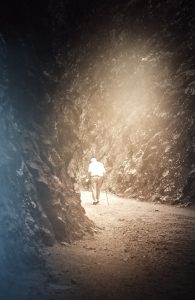
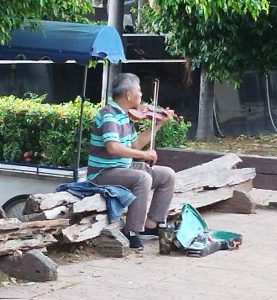
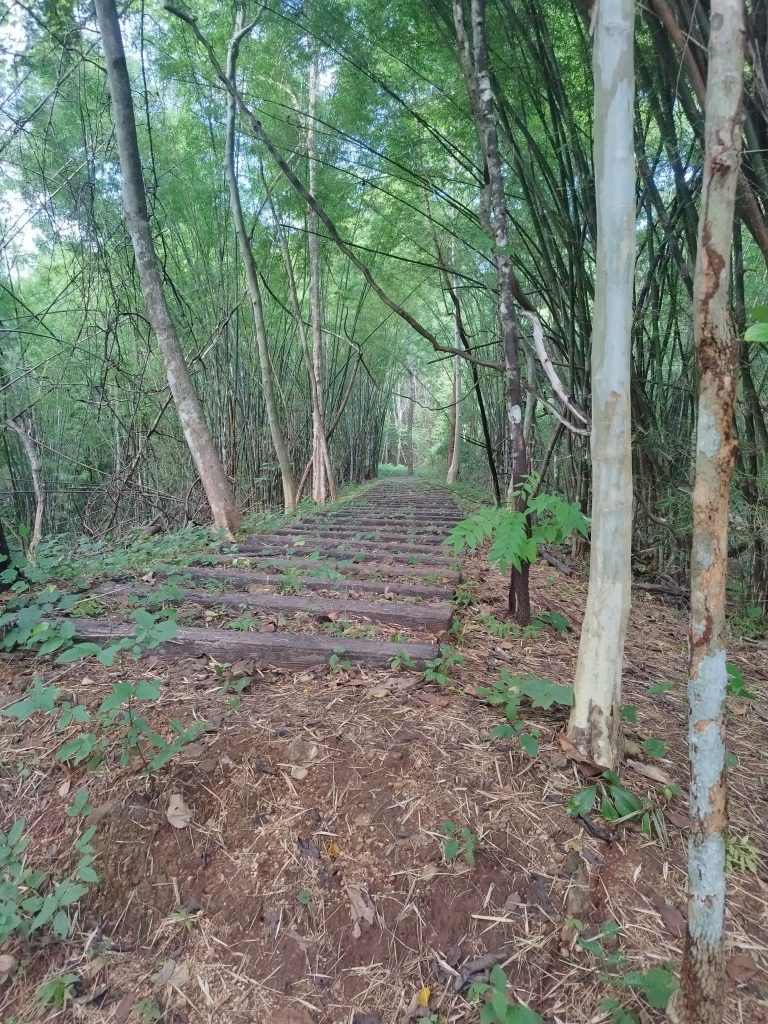
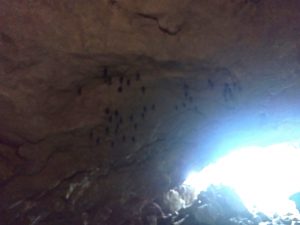
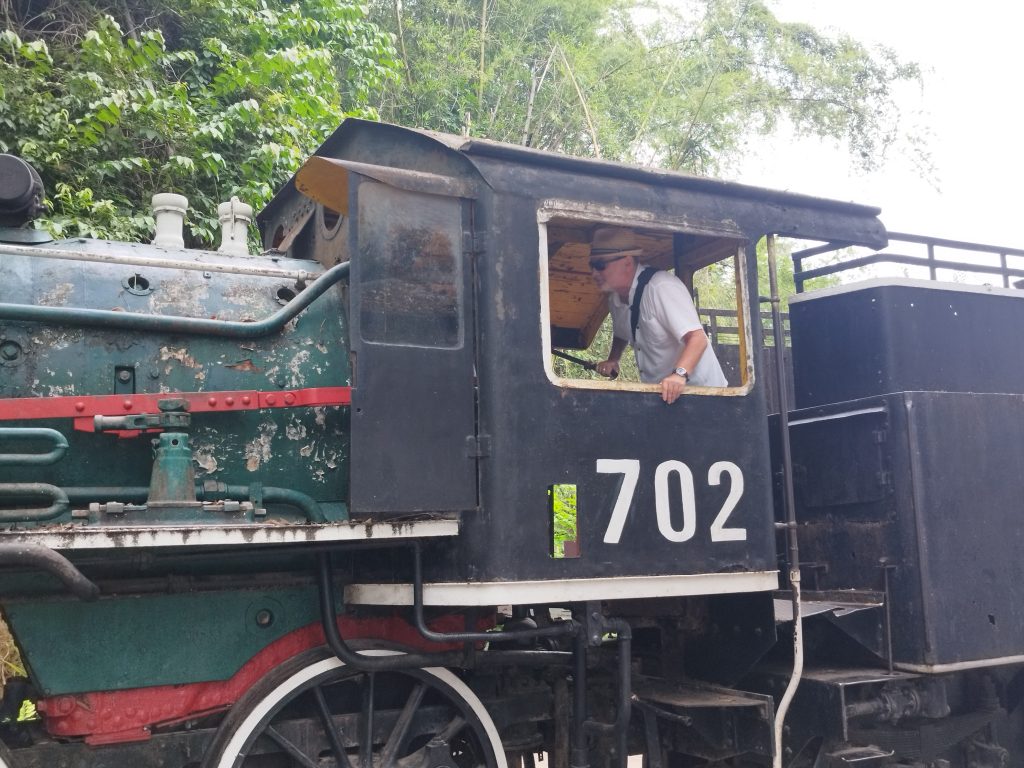
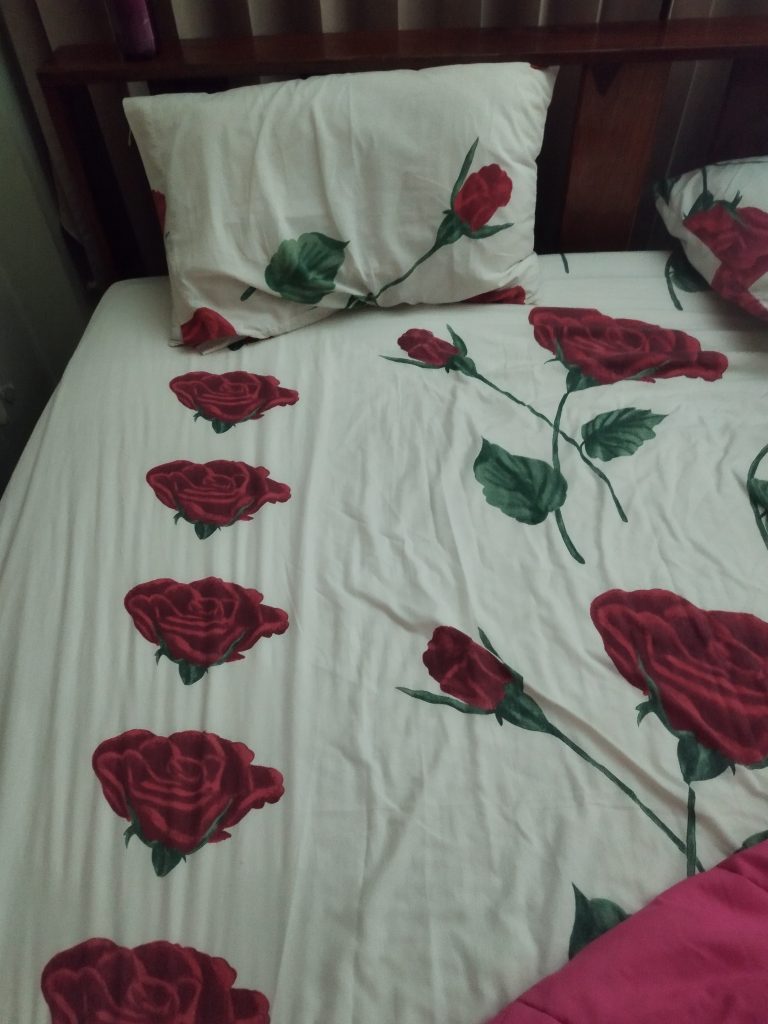


Wow! Really interesting, Kathy. Can totally understand what a moving experience that must have been. xx
And here I learn even more about Marmite!! My dad now keeps it in his cupboards for when he makes hearty soups…it’s flavor a great compliment. Thank you for that history…to not re-do, we must confront these past acts no matter how uncomfortable. Onward!
Great to hear all about part 11 of your travels. Written so well. A very moving account of your impressions of the place. Brings home what your dad and mine must have gone through during WW2.
Fascinating to read all about this. The whole area must have been extremely interesting to visit, although rather depressing I’m sure. You certainly have a very good way with words describing it all. Take care xx
Thanks Teresa x